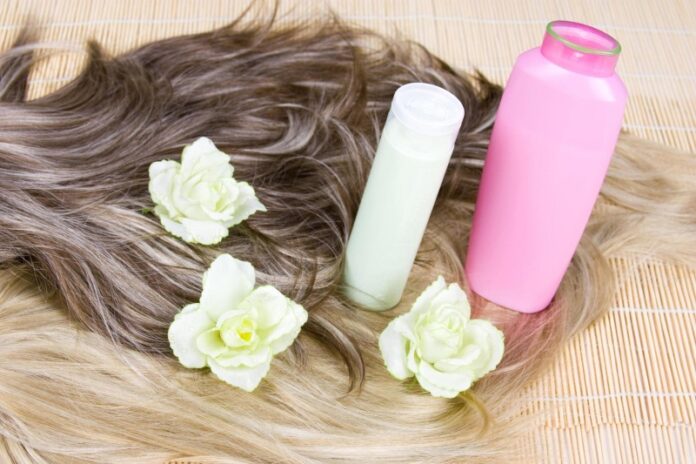In a world where our hair undergoes constant stress from environmental factors, heat styling, chemical treatments, and poor nutrition, it’s no wonder that damaged hair is a common concern for many individuals. However, with the right care and products, you can breathe life back into your locks and restore their vitality.
Among these products, the right shampoo can make a significant difference. In this comprehensive guide, we’ll delve into the world of shampoo for damaged hair, exploring what causes damage, key ingredients to look for, how to use them effectively, and recommendations for the best shampoos on the market.
Understanding Damaged Hair
Understanding damaged hair is essential for effective care. Heat styling, chemical treatments, environmental factors, and poor nutrition contribute to its deterioration. This damage weakens strands, causes breakage, and leads to dullness. By identifying these causes, one can choose appropriate products and routines to restore hair health and vitality.
Before we dive into the specifics of shampoo for damaged hair, it’s crucial to understand what causes damage in the first place. Hair damage can result from a variety of factors, including:
- Heat Styling: Excessive use of hair dryers, straighteners, and curling irons can strip the hair of its natural oils, leaving it dry and brittle.
- Chemical Treatments: Perms, relaxers, bleaching, and coloring treatments can weaken the hair shaft, leading to breakage and split ends.
- Environmental Factors: Exposure to UV rays, pollution, harsh weather conditions, and chlorine from swimming pools can all take a toll on your hair’s health.
- Poor Nutrition: A diet lacking in essential nutrients, such as vitamins, minerals, and protein, can result in weak, lackluster hair.
Key Ingredients To Look For Damaged Hair
For damaged hair, prioritize ingredients like protein (keratin, collagen), moisturizers (shea butter, coconut oil), vitamins (A, C, E), and antioxidants (green tea extract). These ingredients strengthen, hydrate, and protect strands from further damage, promoting healthier, more resilient hair.
Choose sulfate-free formulas to maintain moisture analysis and avoid further dryness. When selecting a shampoo for damaged hair, it’s essential to choose products that contain nourishing and repairing ingredients. Here are some key ingredients to look for:
- Protein: Proteins such as keratin, collagen, and wheat protein help strengthen the hair shaft and repair damage.
- Moisturizing Agents: Ingredients like shea butter, coconut oil, and argan oil provide much-needed hydration to dry, damaged hair, restoring its softness and shine.
- Vitamins and Antioxidants: Vitamins A, C, and E, along with antioxidants like green tea extract and vitamin-rich fruit extracts, help protect the hair from environmental damage and promote overall hair health.
- Sulfate-Free Formulas: Sulfates, such as sodium lauryl sulfate (SLS) and sodium laureth sulfate (SLES), can strip the hair of its natural oils and contribute to dryness and damage. Look for shampoos that are sulfate-free to maintain the hair’s moisture balance.
Using Shampoo For Damaged Hair Effectively
To use shampoo for damaged hair effectively, massage gently into the scalp, avoiding harsh scrubbing. Focus on cleansing the scalp to remove buildup, then rinse thoroughly with lukewarm water.
Follow with a nourishing conditioner to replenish moisture and detangle strands for smoother, more manageable hair. To get the most out of your shampoo for damaged hair, follow these tips for effective usage:
1. Use A Gentle Cleansing Technique
Avoid vigorously scrubbing your hair, as this can further damage weakened strands. Instead, massage the shampoo into your scalp using gentle, circular motions, and let the lather rinse down the lengths of your hair.
Using a gentle cleansing technique is essential for damaged hair. Avoid vigorous scrubbing, which can further weaken strands. Instead, massage shampoo into the scalp with soft, circular motions, allowing the lather to cleanse without causing friction. This helps maintain hair’s strength and reduces the risk of breakage.
2. Focus On The Scalp
Concentrate the shampoo application on your scalp, where excess oil and product buildup tend to accumulate. This will help keep your scalp clean and healthy without over-drying the length of your hair.
Focusing on the scalp when using shampoo for damaged hair is key. Gently massage the shampoo into the scalp to remove excess oil and buildup without stripping moisture from the lengths. This ensures a clean, healthy scalp while preserving the natural oils essential for hair health.
3. Rinse Thoroughly
Make sure to rinse your hair thoroughly with lukewarm water after shampooing to remove all traces of product residue. Residual shampoo can weigh down your hair and make it appear dull and lifeless.
Rinsing thoroughly after shampooing is crucial for damaged hair. Use lukewarm water to remove all traces of product residue, ensuring no buildup is left behind. Proper rinsing prevents weight-down and dullness, maintaining hair’s natural shine and vitality.
4. Follow With A Conditioner
After shampooing, follow up with a nourishing conditioner specifically formulated for damaged hair. This will help replenish moisture, seal the hair cuticle, and detangle strands for smoother, more manageable hair.
Conclusion
Damaged hair can be a source of frustration and insecurity for many individuals, but with the right care and products, you can restore your locks to their former glory. Shampoo for damaged hair plays a crucial role in repairing and protecting your hair from further damage, so it’s essential to choose products that are specifically formulated to address your hair’s needs.
By understanding the causes of damage, selecting shampoos with nourishing ingredients, and following proper usage techniques, you can revive your locks and achieve healthier, more resilient hair.
